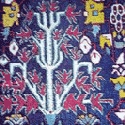Rampur violin and oud making are traditional crafts that involve the construction of musical instruments:
Rampur Violin: The Rampur violin is a variant of the Western classical violin that is known for its distinctive tone and design. It originated in the city of Rampur in Uttar Pradesh, India, and has become popular among classical musicians in the region. Making a Rampur violin typically involves the following steps:
- Selection of wood: The violin maker carefully selects the type of wood for the body, neck, and fingerboard. Maple is commonly used for the back and sides, while spruce is preferred for the top.
- Carving the body: The wood is shaped into the form of a violin body using various tools. The top and back plates are carefully carved and shaped to achieve the desired tonal qualities.
- Assembly: The various components of the violin, such as the neck, soundpost, and bass bar, are fitted together. The purfling, which is a decorative inlay, is also added.
- Varnishing: The violin is then coated with varnish to protect the wood and enhance its appearance. Different varnishes can be used to achieve specific aesthetic effects.
- Fitting the hardware: The tailpiece, pegs, fingerboard, and strings are added to complete the instrument.
Oud Making: The oud is a traditional stringed instrument commonly found in Middle Eastern and North African music. It is similar in appearance to a lute or guitar and has a unique sound. Crafting an oud involves the following steps:
- Wood selection: Similar to the violin, the choice of wood is crucial. Varieties such as walnut, rosewood, and mahogany are commonly used for the oud’s body. The soundboard (top) is typically made of cedar or spruce.
- Body construction: The selected wood is carved and shaped into the rounded body of the oud. The back is usually formed by joining two or more pieces of wood.
- Soundboard preparation: The soundboard is carefully crafted, and a soundhole (rosette) is created, which plays a significant role in the oud’s sound projection.
- Neck and fingerboard: The neck is crafted separately and attached to the body. It is usually made of a hardwood such as mahogany or walnut. The fingerboard, usually made of ebony, is then added.
- Fretting: Depending on the specific style, the oud may have frets. These are usually made of gut or nylon and are positioned on the fingerboard.
- Finishing touches: The oud is sanded, polished, and often decorated with inlays, such as mother-of-pearl or other ornamental materials.
YOUR VIEWS
PRACTITIONERS: INDIA
Access 70,000+ practitioners in 2500+ crafts across India.
BIBLIOGRAPHY
10,000+ listings on arts, crafts, design, heritage, culture etc.
GLOSSARY
Rich and often unfamiliar vocabulary of crafts and textiles.
SHOP at India InCH
Needs to be written.





